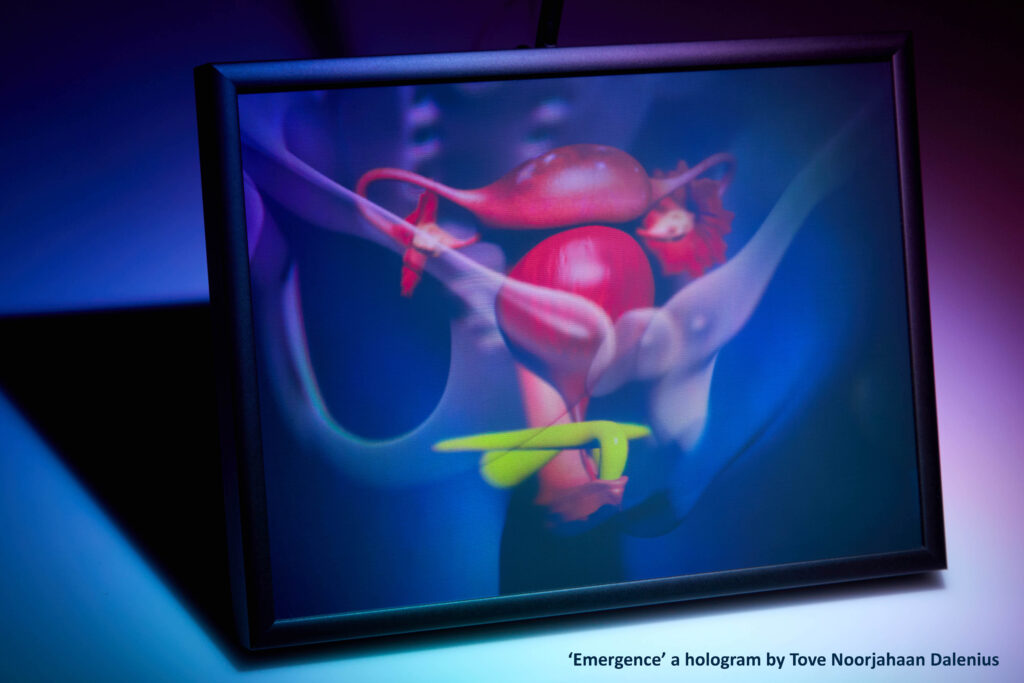
‘Emergence’
Hologram
15×20 cm
17 cm z-axis depth
Credits
1. Bulbo-clitoral organ model (in yellow) “Clitoris V2”: Odile Fillod & Philippe Cosentino
2. Original image by NASA/ESA and Orsola De Marco (Macquarie University), 3D mapping by Tove N Dalenius
3. Stock 3D anatomy model
4. CHIMERA holographic exposure Yves Gentet
5. Holography composition Tove N Dalenius
31 January 2023
The artist Tove Noorjahaan Dalenius has today announced the release of her new full-parallax holographic work entitled ‘Emergence’.
The artwork uses the latest holographic techniques and builds on anatomical MRI scans to provide a striking three-dimensional image showing the full and significant extent of the clitoris within a body for the very first time.
Speaking of the need for this work, which is not for sale, Tove said:
“I was intrigued by the hidden history of the clitoris (bulbo-cliteral organ). It did not feature in any educational resources when I grew up. Although it has been known to anatomists since the mid-nineteenth century, it never made it into textbooks.”
“In 2013 I saw the first digital model of the full structure of the clitoris based on MRI scans by the Australian urologist, Professor Helen O’Connell. She reported being disappointed to find out the structure and nerves were not described in surgical training manuals, and it made me angry that an accurate portrayal of our anatomy has been denied us for so long.”
“Even now, this anatomical fact is still difficult to mention and there have been obstacles to getting this work made. I think we have the right to own knowledge of our own bodies through science and I hope this artwork will help women everywhere understand more about our own bodies.”
Accurate science combines with dreamy futurism.
The artwork is a form of collage, which Tove created by combining a 3D printable model of the bulbo-cliteral organ, based on scientific literature, developed by the researcher and anti-sexism activist Odile Fillod, and additional pre-existing anatomical models. But she also decided to add a NASA image of a star constellation on the womb.
“It still mesmerizes me how exposing a silver halide emulsion with coherent light can generate a permanent 3D light sculpture. I remember standing in silence taking in the work for the first time. I was immediately struck by the insight that the elements in our bodies were made within a star and many have been through numerous supernovas. The womb assembles the parts that become new life.”
The techniques involved took ten years to perfect and to realise the final work Tove collaborated with the French holography expert Yves Gentet who exposed the 15×20 cm hologram using the very latest high-resolution technology.
The hogels (holopixels) are only 250 micrometres in size, ensuring a smooth image, and the colours are outstanding. The technology uses continuous RGB lasers with the wavelengths 639, 532 and 457 nm. The perspective field of view of 120° provides full parallax.
#EmergenceHologram
